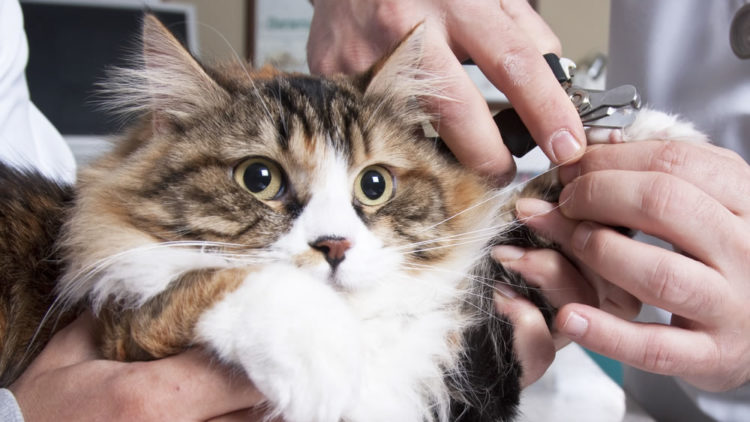For humans, a new haircut can be all about looking good and feeling fresh. But for our pets, proper grooming is essential to keep them healthy and happy.
Pet grooming controls shedding and can help you identify health problems before it is too late plus it is a great bonding experience with your pet and will further deepen your relationship.
You don’t necessarily have to go to a professional groomer to make your pet’s coat look shiny and healthy or to keep those ears squeaky clean.
A professional groomer may be an expense too far for pet owners.Fortunately, with the right tools, patience and practice, you can easily groom your pet at home and make them look amazing on a budget (you need to purchase proper grooming tools).
Follow the tips below for an expert grooming session:
Having someone to hold your pet and offering positive rewards (treats and attention) as you go is ideal!
Getting the right tools
Ask your vet which tools you’ll need to properly groom your cat or dog. Depending on the length (short, medium, long), type (smooth, wired, curly) and thickness of your pet’s coat, you’ll need different kinds of brushes and combs to get the job done right.
- Brushing your pet
Brush Gently and RegularlyRegular brushing removes dirt and dead hair from his coat, preventing mats and tangles and evenly distribute natural skin oils for a healthy shine. Brushing also gives you a great opportunity to check for fleas and ticks and make sure that your pet isn’t playing host to any unwanted parasites that can spread disease.
Most dogs and cats can get by with a thorough brushing a couple times a week, however, how often you need to brush his fur will vary based on your pet’s breed, type and thickness of coat.
Using the appropriate brush for your pet is very important. If your pet is uncomfortable with being brushed, don’t force her and try again another time.
- Bathing your pet
Yes, it is possible to give your cat (or dog) a bath without the claws coming out.Bath time for your pet should take place at least once every three months – more often for those that spend a lot of time outside or have certain skin conditions. Speak with your veterinarian about what is best for your particular dog or cat.
To bath your cat or dog at home, set out all the supplies first — shampoo, towels, etc then:
- Start by filling a large tub or sink with 3-4 inches of lukewarm water.
- Completely wet your pet with water from a spray hose or unbreakable cup. Be careful to not spray directly into their eyes, ears, or nose.
- Gently massage in a specially-formulated shampoo for pets.
- Rinse and repeat, as needed. Try using a wet washcloth to gently wipe down their face, ears and nose.
- Longer haired breeds may require a pet conditioner. If so, follow up the shampoo + rinse step with a conditioner + rinse step.
- Once the shampoo and conditioner are fully rinsed, turn off the water and gently squeeze out excess water from your pet’s coat.
- Then follow it up with a large towel pat down to dry them off.2,3 Try to resist temptation to rub the towel in circles –doing so may make knots in long and curly coated pets which become hard to remove later.
Important: never use human shampoo for your pet.
3. Clipping the Nails
Catch your pet when she’s relaxed, to give her paws a pedicure. Not only will shorter nails help prevent you and your furniture from getting scratched, you’ll also be able to inspect her paws for problems like swelling, cracked pads or matted fur.
- Start by purchasing nail clippers made for a dog or cat. There are two styles – a scissor type and a guillotine type. Choose the type you are most comfortable with.
- For cats and especially wiggly dogs, try wrapping them in a towel and sitting them comfortably on your lap when they are mellow. For other pets, pull them in close to your body and firmly take hold of their paw. Cut the tip of the nail from top to bottom at a slight angle.
- Repeat to trim a little more but stop just above the quick, the blood supply that runs into the nail.
- If you accidentally cut the quick and it starts to bleed, immediately hold a clean cloth or paper towel to the wound. Next, scoop some styptic powder or cornstarch into your palm and gently dip the bleeding nail into the styptic powder. Allow it to clot and stop the bleeding. If the nail continues to bleed, contact your veterinarian
If your pet shows any signs of resistance do not try and force the issue otherwise you risk being scratched.
4. Cleaning the Ears
Regular ear cleaning should be part of your grooming routine. Check your pet’s ears once a week or so. If you see wax, wipe the ears out with a cotton ball dampened with a gentle ear-cleaning solution recommended by your veterinarian. Never put cotton swabs into your pet’s ears — you can cause injury. If your pet’s ears are red, swollen, excessively waxy, itchy, or have a bad smell, see your vet as soon as possible. These things could signal an ear infection, which is painful for your pet.
Never put any powder or liquid in a pet’s ear that shows signs of infection, because you run the risk of damaging their eardrums.


